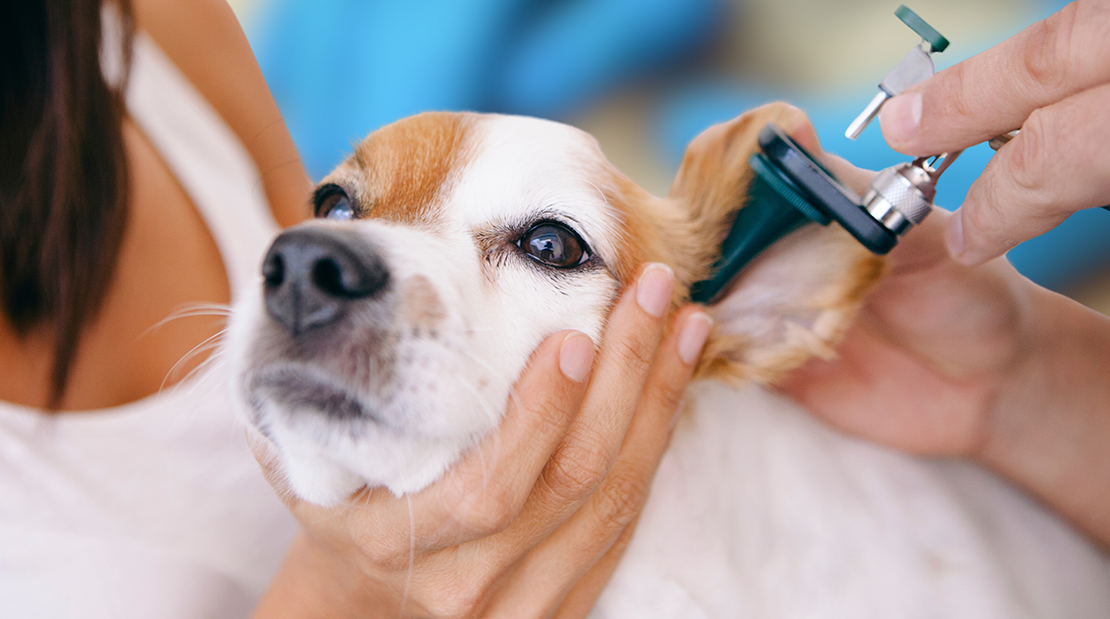
Ear Infections in Dogs and Cats
We treat plenty of ear infections at Cy-Fair Animal Hospital, especially during the Spring and Summer months when seasonal allergies and days of water play abound. Today, I’m sharing practical tips on spotting a possible ear infection early, preventing ear infections in your pet, and knowing what to do if you think your furry friend may be dealing with one.
Early Signs of Ear Infection in Dogs and Cats
When your pet is dealing with an external ear infection, you might quickly notice they’re uncomfortable or in pain. The signs of an ear infection in both cats and dogs are similar. The most common sign of an ear infection I see in practice is excessive scratching at the ears, or they’re shaking their heads more than usual. You might also see a thick gunk in their ears that keeps returning after you’ve cleaned them. These are all early signs that your pet might be dealing with an external ear infection.
Ear infections that extend from the external ear canal to the internal ear canal can present a little different. Since the facial nerve (cranial nerve 7) and vestibulocochlear nerve (cranial nerve 8) run alongside one another in the internal ear canal, clinical manifestations occur due to damage to these nerves. These infections can result in some neurological signs, such as facial drooping on one side, tilting of the head to one side, and an imbalance when walking.
How to Prevent Ear Infections
From swimming in the pools on a hot summer day to getting groomed at the pet salon, the best way to prevent an ear infection is to keep your dog or cat’s ears clean and dry. If the ears remain moist, it creates an environment that yeast and bacteria loves to grow and multiply in.
Some breeds– like Frenchies and English bulldogs– are prone to seasonal allergies. Staying on top of their allergy medication can also be beneficial in preventing ear infections. If you’re not keeping up with your pet’s allergy medications, your pet’s immune system becomes so busy fighting off the allergen that they become susceptible to developing secondary ear infections. That’s why consistent treatment for seasonal allergies can help reduce how often you see your veterinarian for an ear infection.
Diagnosis and Treatment
If I suspect an ear infection, I usually take an ear swab and perform a cytology test in the office to determine the type.
We see two types of ear infections in pets: yeast budding and bacterial ear infections. With bacterial infections, the bacteria may be either cocci, which look like little circles under the microscope– or rods, which look exactly like little rods.
Rod-shaped bacterial infections are the most resistant to treatment, and it may take your pet a couple of weeks to fully heal. Sometimes, it can take several rounds of medication before you can get rid of it entirely. However, infections with cocci are typically treated and healed within a week.
What we see on the ear swab determines the best treatment for your pet. Most ear infections only require topical treatment like ointment or drops. In some cases, we may prescribe steroids or NSAIDS to reduce redness and inflammation as well.
In extreme cases, surgery may be necessary for issues like hematomas– which can occur when an animal shakes its head too aggressively in pain and ends-up rupturing an internal blood vessel of the ear. An aural hematoma is a blood-filled tumor of the pinna that must be surgically repaired to prevent further complications. It’s best to see your veterinarian as soon as you see signs of discomfort to treat any infection quickly and prevent it from progressing.
Recurrent Ear Infections
As I shared earlier, some breeds are more prone to ear infections, and depending on the type of bacteria present, we may see recurrent ear infections. Some medications can also affect your pet’s ability to fight infections.
I once treated a dog with a highly treatment-resistant chronic ear infection in our Houston location. We tried different medications, but the infection kept coming back. As the infection progressed deeper into the ear canal, we could hardly see the eardrum, and the dog whined in pain every time its ear was touched.
Due to the infection, the dog’s eardrum was no longer intact, and the dog began to exhibit neurological signs. The infection became so chronic that it ate everything inside the ear canal. The next option for this dog was total ear canal ablation, in which we had to remove the eardrum to relieve the infection completely.
This case is an example of why it’s so important to keep your pets’ ears clean and dry, to treat a possible ear infection as early as possible, and to stay on top of all medications. Not only can ear infections be painful for your pet, but they can also cause severe issues if left untreated.
If you need help learning how to clean your dog or cat’s ears properly, be sure to ask your veterinarian. We can show you the best way to take care of your pet’s ears. All dogs and cats, no matter their age, can be susceptible to ear infections. But, with proper prevention, we can minimize the risk.

